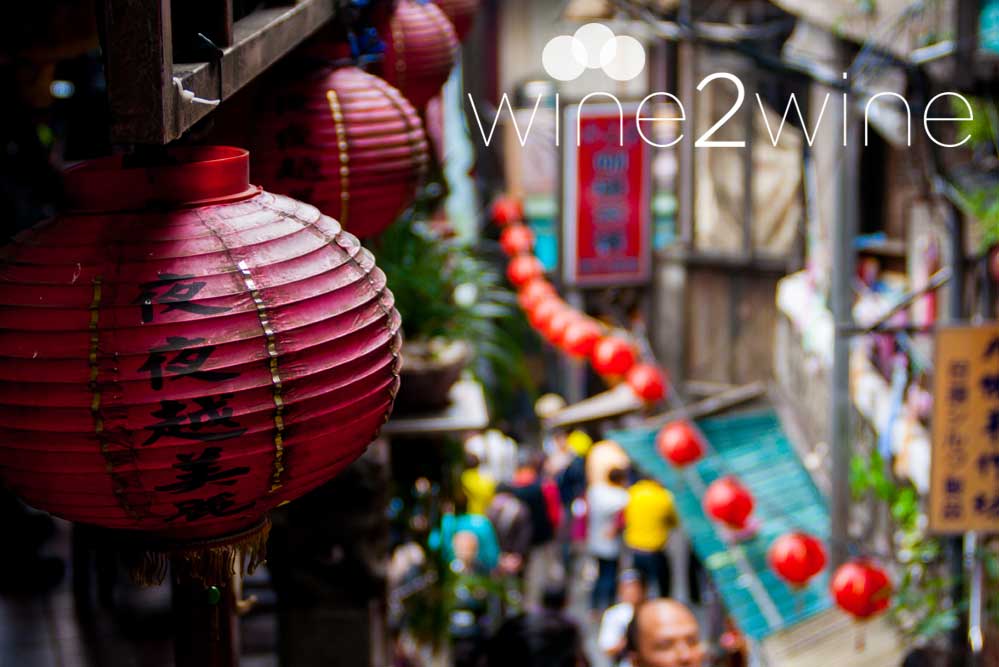Export Italian wine to China: The 5 keys to access the Chinese market

Exporting wine to China and the opportunities available with respect to the Chinese market is now very clear to Wine Industry professionals. According to the findings of OIV, the International Organisation of Vine and Wine, wine consumption in China is constantly increasing. For 2017 about 18 million hectoliters were consumed, a growth of 3.5% compared to the previous year. The quantity of wine imported from abroad has increased by 17% compared to the 2016 data: at the moment, China is the fifth largest importer of wine in the world in terms of volume, and fourth largest in terms of value.
In this context, Italy has been able to progressively increase its presence on the Chinese market. Also thanks to the organisation of events such as Vinitaly Hong Kong, the export of Italian wine to China in 2017 recorded an increase of 22% in value and 14.2% in volume. Fortunately, there is still plenty of room for improvement and there is plenty of information that international experts make available to wineries. We have collected some of the more fundamental points to discuss here, and will elaborate on the following ‘5 keys’ to access the Chinese market.
1- The status symbol of Made in Italy
The Chinese market is strongly linked to elements capable of transmitting prestige, a privileged social position and wealth. The ‘Made in Italy’ tag is synonymous with high quality and it is a natural response for people to desire these products as well as talk about Italian brands. This can be demonstrated by the presence of all the major Italian luxury brands in each of the main Chinese cities. Despite having entered the equation more recently, Italian wine in China is now enjoying the same aura of style and superiority as other markets.
Despite this, relying exclusively on the strength of the “Made in Italy” brand to sell Italian wine on the Chinese market could prove to be short-sighted. As we pointed out in the article on current Wine Marketing opportunities for the Italian wine market, having a well-thought-out strategy is vital. The first step in creating a winning strategy is to model it on the characteristics of the product and, beyond this, on the knowledge of the target audience.
China is going through a moment of profound socio-cultural change. Among other things, a perception of wine that goes beyond charm and prestige is gradually gaining ground. Consumers are beginning to appreciate the pleasures of wine at the table, both on festive occasions and at home. Chinese palates are gradually becoming accustomed to more western nuances of taste, opening up to experimentation and appreciation of diversity. The promotion of Italian wine in China should therefore aim to magnify this new sensitivity, communicating the value of the product even beyond the brand’s reputation.
2- Make way for young people
Young consumers play a key role in this socio-cultural transformation. China’s economic development and openness to the West has exposed new generations to the globalization of wine. While Chinese middle-aged and older consumers are generally more traditional, Millennials and later generations have learned to appreciate different categories of wine and have learnt about the different grape varieties. They have developed modern preferences, and look to the wines coming out of foreign countries to satisfy their tastes.
Following the natural demographic change, the class of regular wine consumers will have less and less of the old traditional mores. With the advent of the current Millennium, wine consumption will grow, and this will likely also be the case with respect to imported wines. The entrepreneur category of the Wine Industry will also be renewed, a mechanism that will lead the new wine culture to be more and more present in the Business Strategy of the Chinese market.
Various scholars in the sector estimate that much of the future consumption of wine in China depends on the young female population, which today represents as much as 50% of the public who prefer imported wine. In addition to associating it with a refined and successful style, Chinese women drink wine for health and beauty reasons, in particular for the strong antioxidant benefits associated with polyphenols. On Tuesday, November 27th, 2018, at 9:00 a.m., wine2wine will dedicate a seminar to marketing strategies for selling wine to young women in Asia. The speaker is Sara Heller MW, an expert in Wine Branding.
3- Knowing is power
The Wine Training Market has experienced significant growth recently. The underlying fact is that the main people interested in wine education are professionals from the Wine Industry who are looking to strengthen their knowledgebase. Beyond the title or the certification, in fact, these operators want to acquire a broader and deeper knowledge of the world of wine, another reason is that they want to improve their ability to analyze wine through taste.
A testimony to this – and in connection with Italian wine – comes from the activities of Vinitaly International through the Vinitaly International Academy. The VIA courses promoted in China have already produced several Italian Wine Ambassadors; a new session of classes will start in Hong Kong in a few days. Furthermore, there are about 17,000 WSET students in China, interestingly, the sommelier as a profession is also taking a foothold in the Chinese market. Since 2008 the University course “Science and Culture of Wine” is also becoming popular. The course was created in Lanzhou by Professor Kong Weibao of the Northwest Normal University: it had little success in the early years, but now has over two thousand students enrolled.
We would like to point out that many younger generation Asians are looking for information about wine online. E-commerce is very strong on the Chinese market, with thousands of regular customers every day. But the Web is also an exclusive channel for getting to know the products that will then be bought by physical establishments and that can be rated and reviewed. Principally, the Social Networks are key and their consideration brings us to the next point.
4- The strength of influencers
Influencers are also called KOL’s, this is an acronym for Key Opinion Leaders. In China they are key figures in the promotion of brands and products. The most prominent influencers also reach millions of followers on social networks. They are a point of reference that Chinese users look to every day to get information and recommendations on what to buy, use or consume.
Italian producers who intend to sell wine in China can benefit greatly from the collaboration with these testimonials. A KOL is in fact an effective bridge between the company and the consumer. He/She is familiar with the local culture, his/her voice is recognized as authoritative and he/she has a strong influence over the public pool of potential customers. They can also act as a DTC channel: KOL’s communication channels can, for example, integrate links to the e-shop of the product they are sponsoring.
Among the Key Opinion Leaders active in the Chinese wine market is Lady Penguin. Behind this nickname is Shengan Wang, a young graduate in Wine and Management from Brown University, she is renowned for wine tasting in both China and abroad. She has the most active wine community in China, with a fan base of one and a half million users. Lady Penguin will be in Italy on 26 November and will be among the speakers at wine2wine 2018, to talk about how to build a Wine Community in China: a valuable opportunity for all operators of the Italian Wine Industry.
5- Broad spectrum B2B
For Italian brands that want to export wine to China, it is essential that they participate in B2B events and meetings, moreover, it is better if they are designed by organizers with an international point of view. This “filter” is useful for reaching common ground; all parties come to an understanding, and at the same time, the needs and business habits of each party involved are met. The presence of an organizer simplifies the process of working between two very different realities – such as Italy and China – they can bridge that gap to fostering a long-term business relationship.
However, the B2B opportunities identified in this context go beyond selling wine in China. Experts in the wine sector that have a long history, like the Italian ones, have another great resource to bring to the table; they have know-how. The Chinese government and entrepreneurs are investing in the supply chain to produce their own wine; however, in most cases, they do not yet have all the skills necessary to obtain high quality products “at home”. This opens the doors to technicians, oenologists and agronomists from outside. This is what has happened in the Ningxia region, the spearhead of the Chinese wine industry which thanks to the hiring of European consultants has been developing successfully.
Conclusion
The Chinese market is one of the most promising targets for wine companies that want to expand their business area abroad. We have tried to give some brief suggestions on possible ways forward. What should emerge clearly however, is that above all, the need to study the destination context in depth is key. Only a clear strategy, developed on the basis of solid market analysis and observation of local habits, can be effective. The regulatory and customs aspects, which are complex and subject to change, should not be underestimated. In order to offer further tools for orientation in this field, we extend our invitation once again: participate in wine2wine 2018, the forum of the Wine Industry that will be held on 26 and 27 November in Verona.
